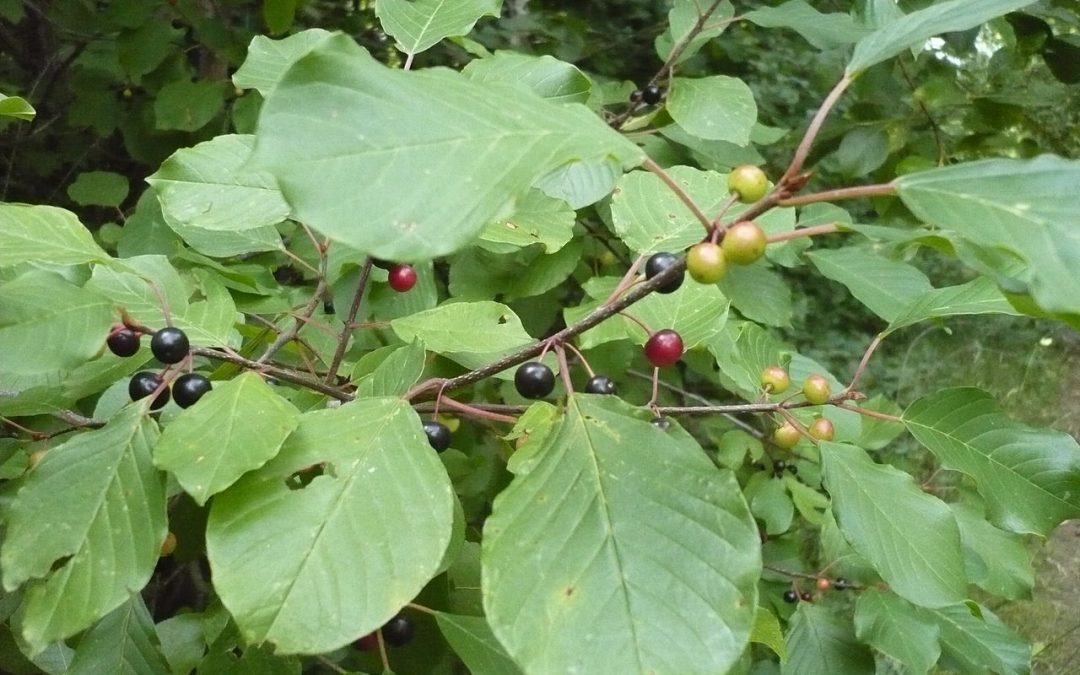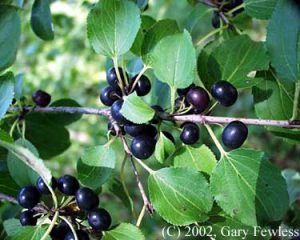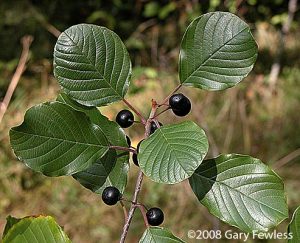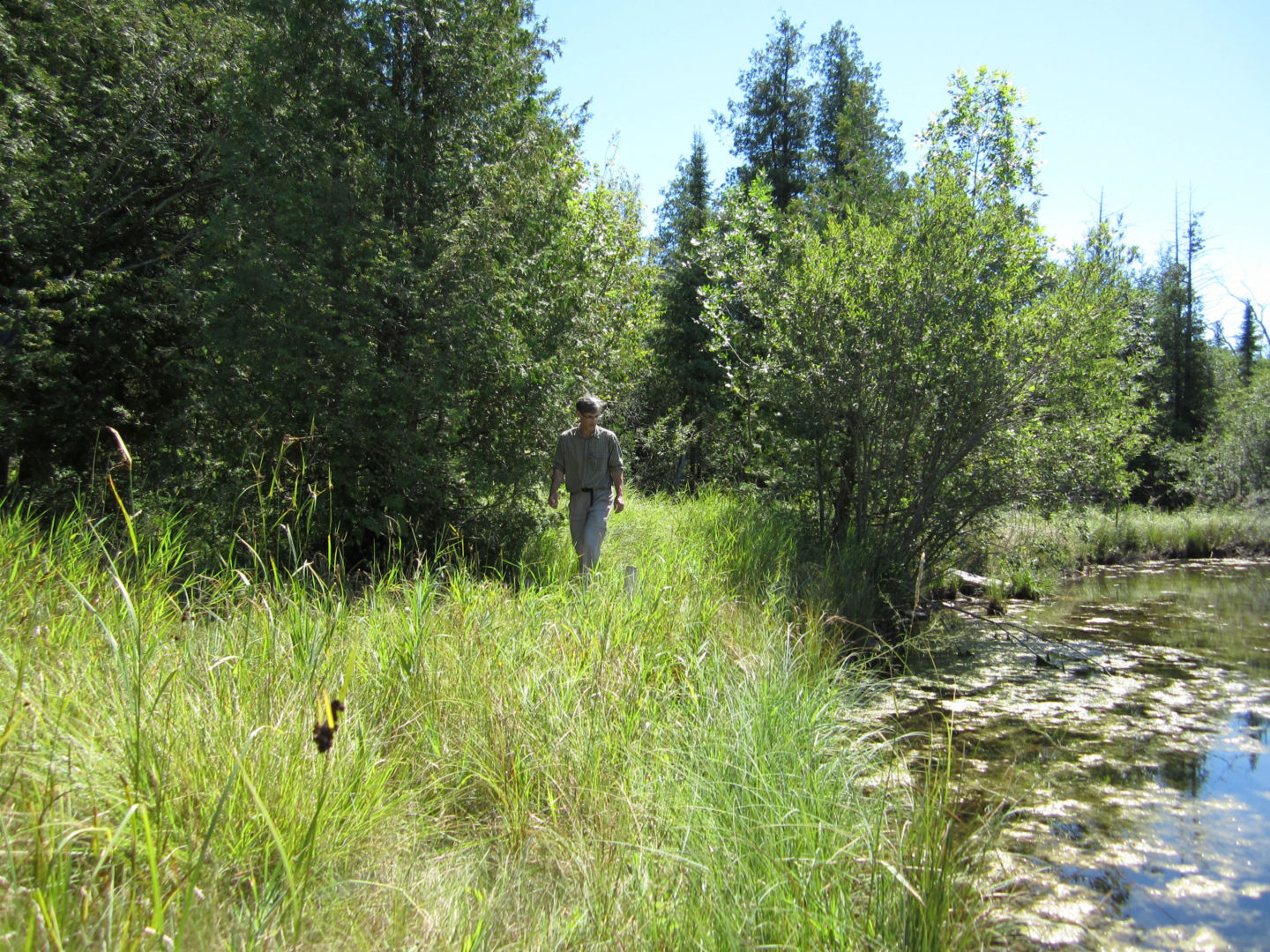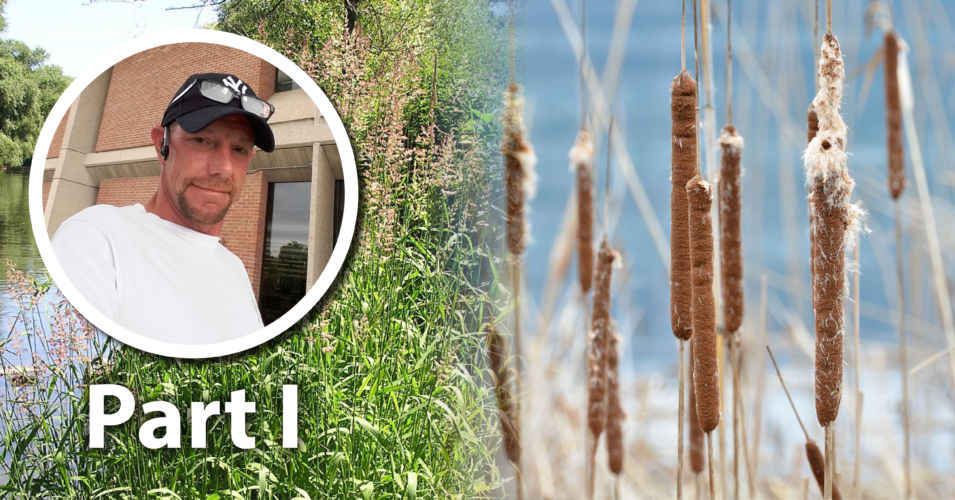Buckthorns displace native understory vegetation, form an impenetrable understory layer, destroy wildlife habitat, and cause long-term decline of forests by shading out other plants. Buckthorns are fast-growing, woody perennials that, if not controlled, can quickly spread. They are deciduous shrubs introduced from Eurasia as ornamentals that were planted in hedgerows and shelter-belts during the 1800s. The hardiness and ability of buckthorns to thrive under a variety of soil and light conditions mean they are a strong invader of our natural areas.
We have two types of buckthorn in Wisconsin: common and glossy. Though both species can be found in either dry or wet sites, common buckthorn is frequently found in uplands while glossy buckthorn is more common in wetter areas.
Common buckthorn is a small tree or shrub up to 25′ tall with dark bark with silvery marks. Most twigs are tipped with a sharp spine. The leaves are very dark and dull to glossy green with 3-5 pairs of leaf veins that are sickle-shaped (curve along the margins of the leaf). The leaves have toothed margins.
Glossy buckthorn (also known as smooth buckthorn or European alder) is a large shrub or small tree up to 18′ tall. The twigs lack the sharp spine that is common on common buckthorn twigs. Glossy buckthorn leaves are oval shaped and dark green and glossy with 8-9 pairs of leaf veins. The leaf edges are toothless and the undersides of the leaves are moderately hairy to smooth.
A cut branch of either buckthorn reveals yellow sapwood and a pinkish to orange colored heartwood. In winter, you can often recognize buckthorn by the conspicuous round, blue-to-black berries.
Mechanical methods such as hand-pulling and digging can be effective on small populations and plants if you take care to remove the as much of the root system as possible. Larger plants can be removed using a leverage tool such as a weed wrench. You can also girdle larger trees by stripping the bark to expose the inner heartwood (make sure make a strip at least a six inches wide around the trunk). For more dense or established populations, chemical control (herbicide) using a cut-stump or basal bark treatment may be most effective.
Learn more about common and glossy buckthorn and how to control it on the Southeastern Wisconsin Invasive Species Consortium’s website.
Photos by Gary Fewless. Thanks to the Door County Invasive Species Team and UW-Extension for help with this story.
Related Content
Prioritizing Invasive Plant Control, Part lll
Wetland Coffee Break: Toward more effective invasive species management: Part 1
Wetland Coffee Break: Chemical control of cattail in species-rich wetlands

